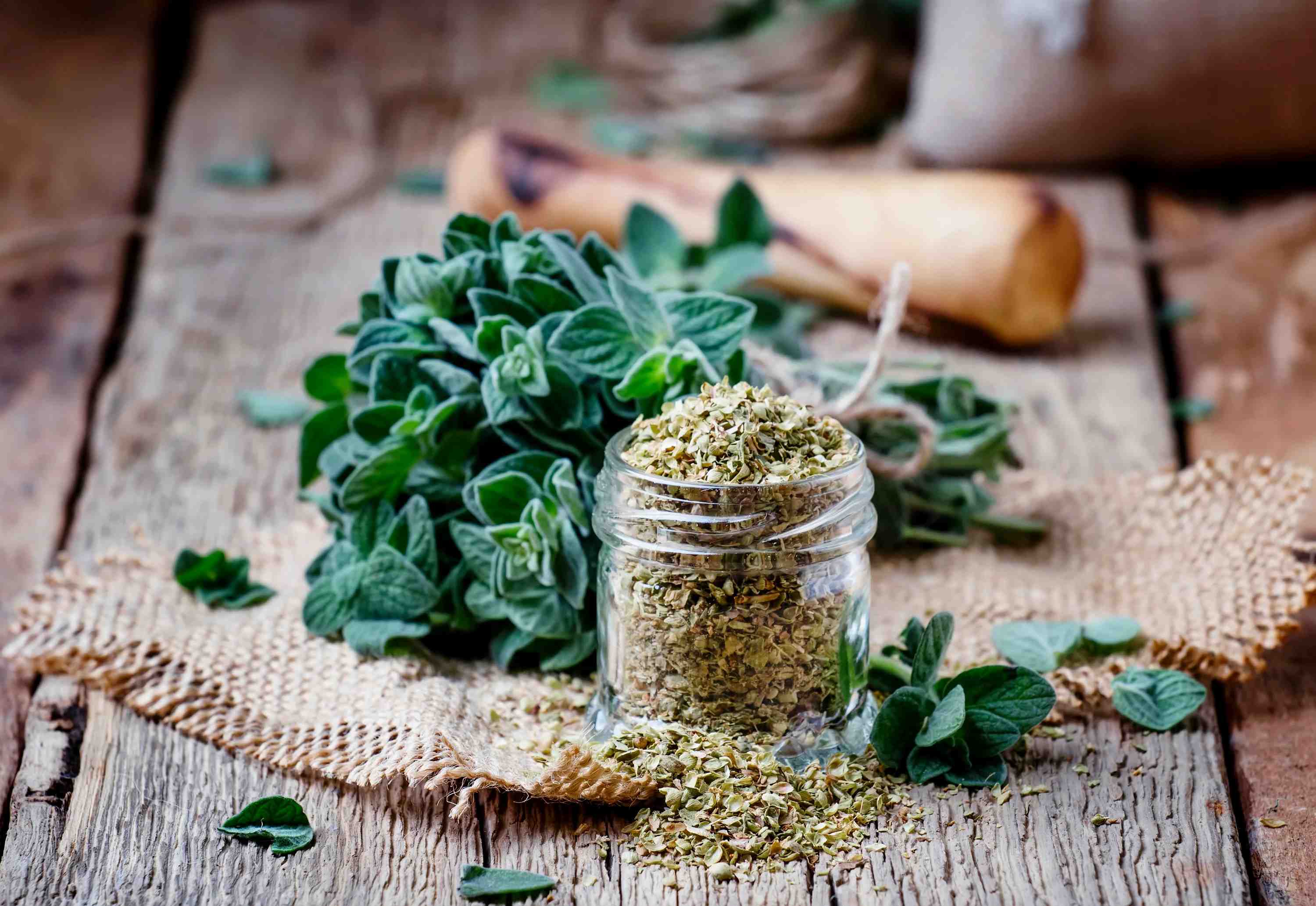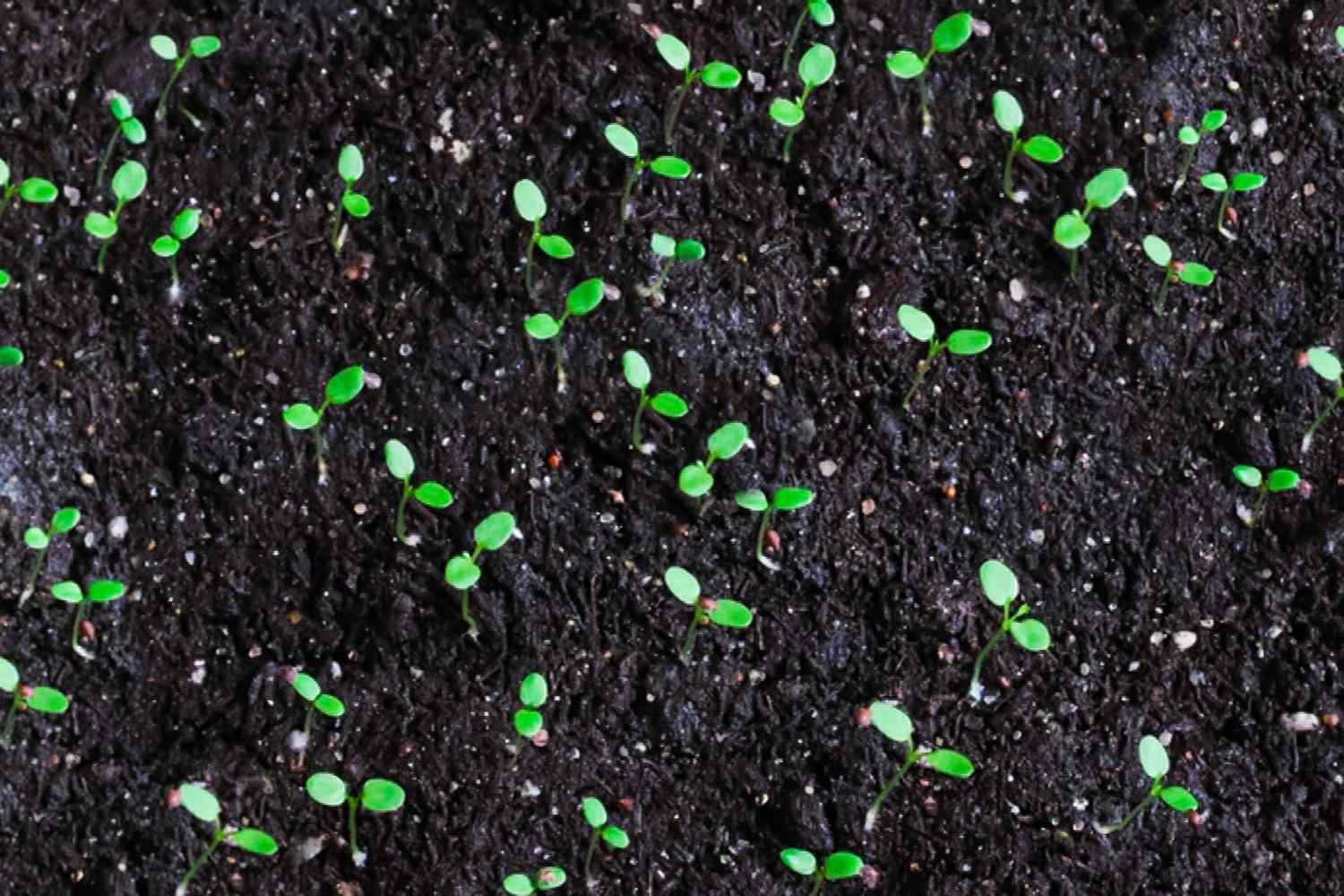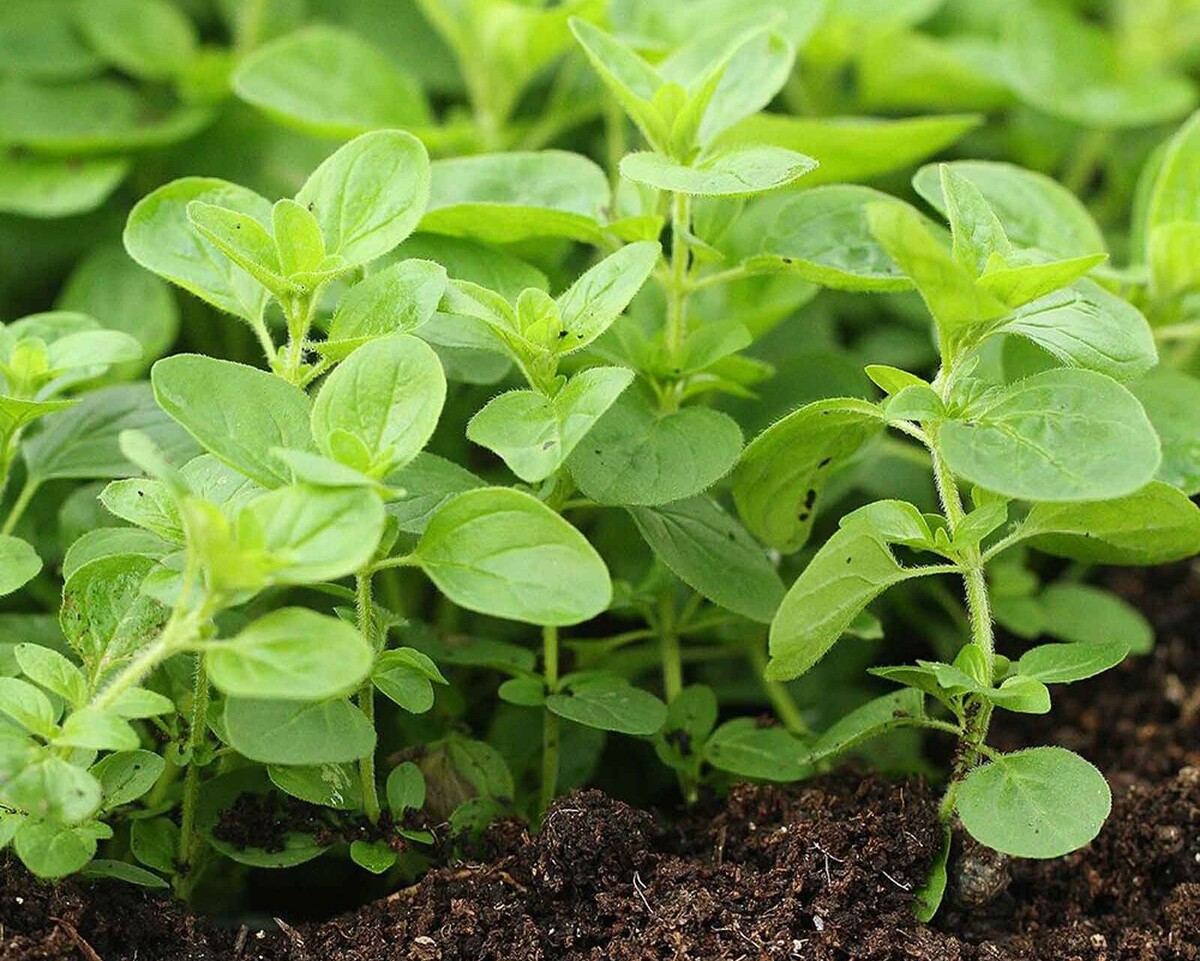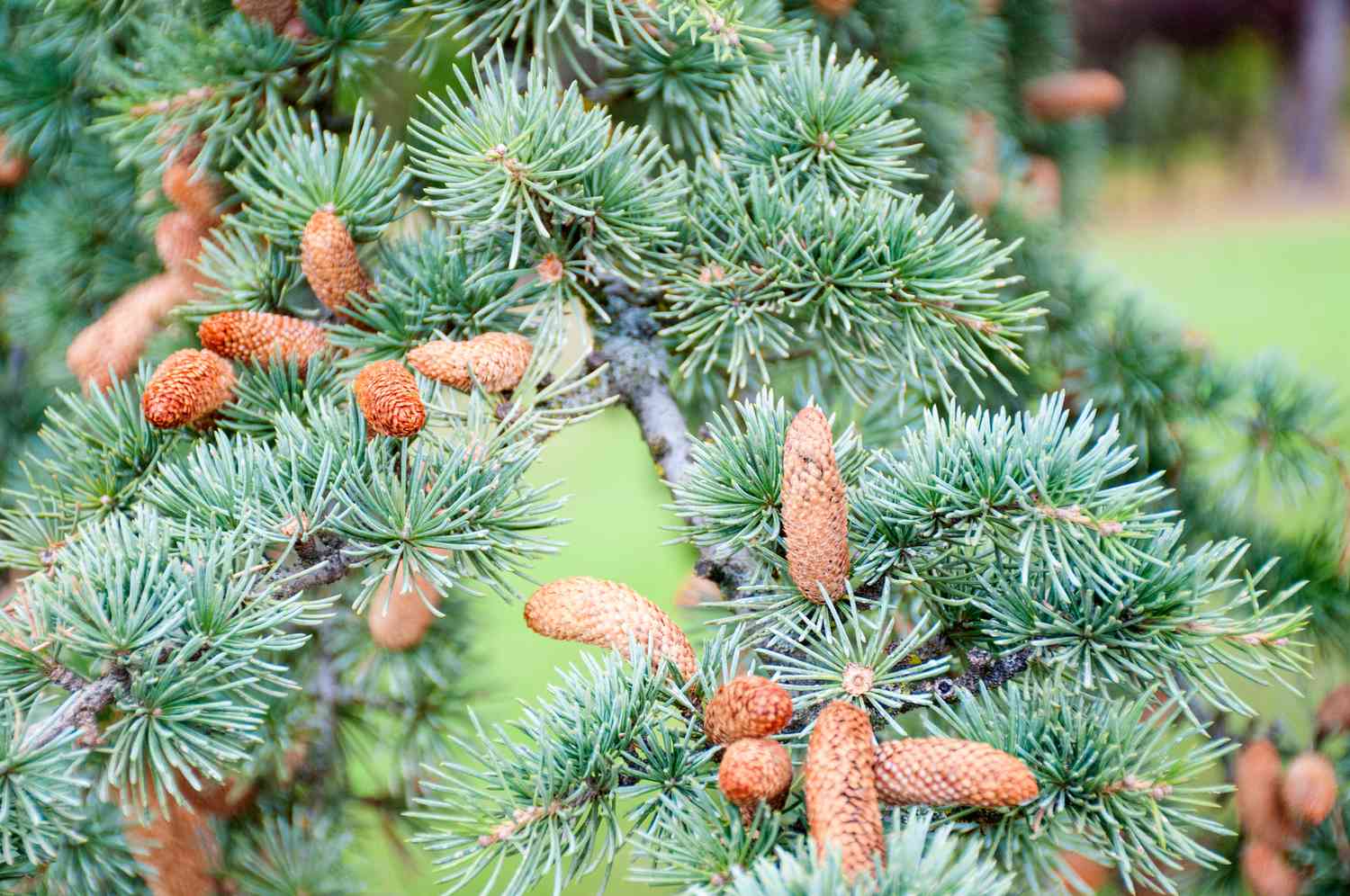Home>Types of Gardening>Ornamental Gardening>What Do Shrubs Look Like
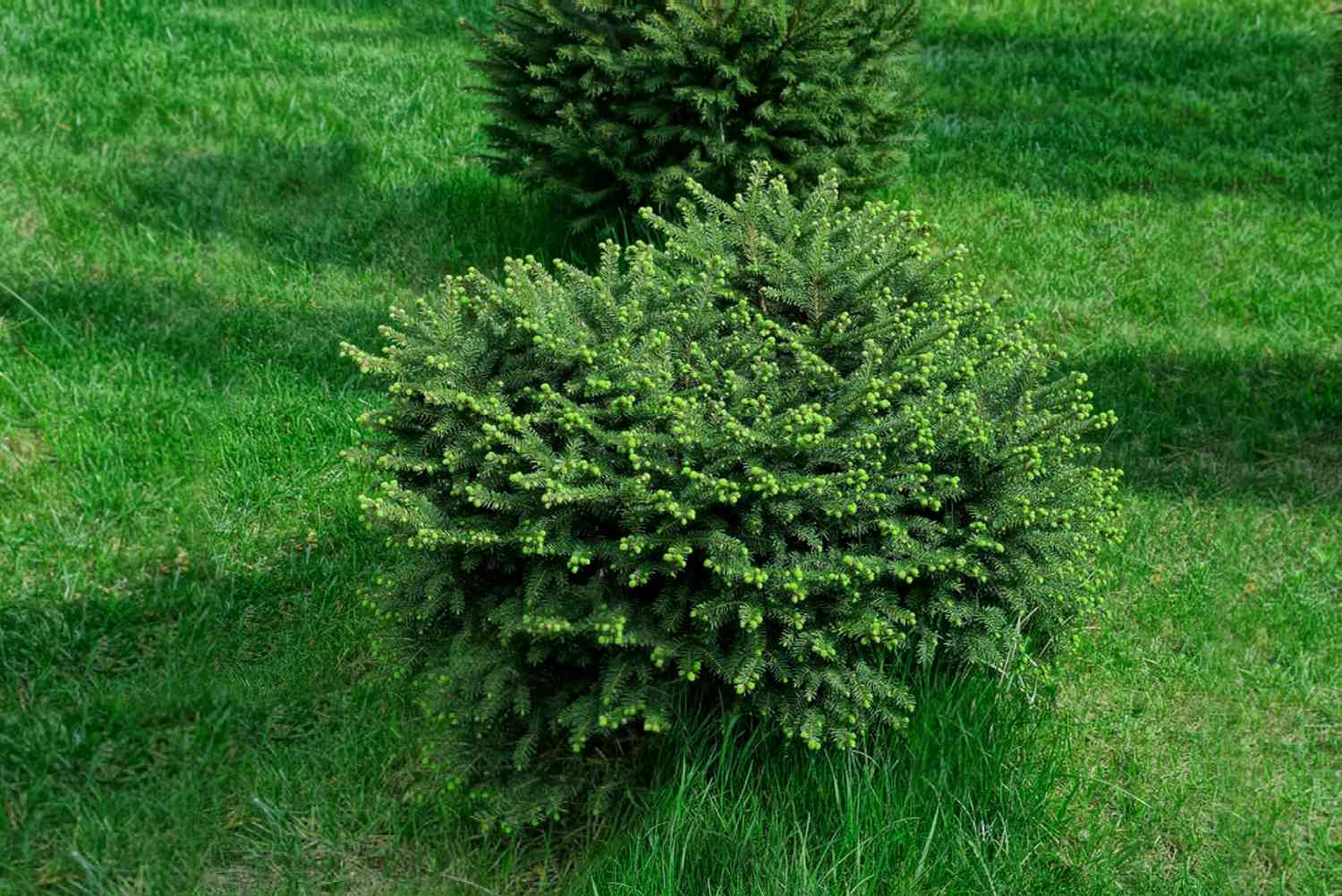

Ornamental Gardening
What Do Shrubs Look Like
Modified: February 6, 2024
Learn what shrubs look like and how they can enhance your garden with our guide to ornamental gardening. Find inspiration and tips for planting and maintaining shrubs.
(Many of the links in this article redirect to a specific reviewed product. Your purchase of these products through affiliate links helps to generate commission for Chicagolandgardening.com, at no extra cost. Learn more)
Table of Contents
Introduction
When it comes to creating a stunning and inviting garden, one element that should not be overlooked is the inclusion of shrubs. With their versatile nature and captivating beauty, shrubs play a vital role in ornamental gardening. Whether you’re looking to add structure, color, or texture to your landscape, shrubs can fulfill these needs and more.
But what exactly are shrubs? In simple terms, shrubs are woody plants that are smaller than trees but larger than herbaceous plants. They are characterized by their multiple stems and can range in height from just a few inches to several feet. While their primary purpose is often aesthetic, they also offer practical advantages such as providing privacy, acting as windbreaks, and attracting beneficial wildlife.
One of the key features that make shrubs so appealing is their varied shapes and sizes. From low-growing mounds to graceful arching forms, there is a shrub to suit every garden style and preference. Additionally, shrubs showcase an incredible array of foliage that can be evergreen, deciduous, or even variegated, providing year-round interest and color.
Another notable aspect of shrubs is their ability to produce beautiful and often fragrant flowers. From delicate blooms adorning spring-flowering shrubs to vibrant clusters on summer-flowering varieties, these stunning displays can transform any landscape into a picturesque oasis. Additionally, many shrubs bear fruits, adding yet another layer of interest and attracting birds and other wildlife to your garden.
Throughout this article, we will delve into the world of shrubs, exploring their various characteristics, types, and uses in landscaping. Whether you’re a seasoned gardener or just starting with ornamental gardening, this comprehensive guide will equip you with the knowledge needed to incorporate shrubs effectively and create a stunning outdoor space.
Definition of Shrubs
Shrubs are an essential component of ornamental gardening, adding structure, beauty, and functionality to landscapes. Before delving into the various characteristics and uses of shrubs, let’s start by understanding what exactly defines a shrub.
In botanical terms, shrubs are defined as perennial woody plants that are smaller in size than trees but larger than herbaceous plants. Unlike trees that have a single main trunk, shrubs typically have multiple stems or branches emerging from the base. This branching characteristic gives shrubs their distinctive bushy appearance.
While there is no strict cutoff for the height of a shrub, they generally range from a few inches to several feet in height. Some shrubs can even grow taller, reaching a height of up to 15 or 20 feet. However, what distinguishes shrubs from trees is their habit of branching out close to the ground rather than having a clear and visible trunk.
Shrubs exhibit a great deal of diversity when it comes to their foliage, flowers, and fruits. They can be categorized into various groups based on these characteristics, such as evergreen shrubs, deciduous shrubs, flowering shrubs, and fruit-bearing shrubs. Some shrubs have attractive leaves that provide stunning color and texture, while others have showy flowers that bring a burst of vibrancy to the landscape.
One key aspect of shrubs is their ability to adapt to different environmental conditions and thrive in a wide range of climates. This adaptability makes them a popular choice for gardens around the world. Whether you live in a region with harsh winters, scorching summers, or a moderate climate all year round, there are shrubs that will flourish in your specific conditions.
Shrubs can be found in various parts of the world, and each region often has its own unique selection of native shrub species. However, through cultivation and hybridization, many shrubs have become widely available and can be found in gardens across different continents.
Now that we have a clear understanding of what defines a shrub, we can move on to explore the specific characteristics and uses of shrubs in more detail.
Characteristics of Shrubs
Shrubs possess a wide range of characteristics that make them an integral part of the ornamental gardening landscape. Understanding these characteristics is essential for selecting the right shrubs for your garden and ensuring their proper care and maintenance. Let’s explore some of the key characteristics of shrubs:
Size and Shape: Shrubs come in a variety of sizes and shapes, allowing for endless possibilities in garden design. They can range from low-growing groundcovers to tall, towering specimens. Some may have a rounded, compact shape, while others may be more sprawling or columnar. The ability to choose shrubs of different sizes and shapes enables gardeners to create visually pleasing arrangements and provide structure to their landscapes.
Foliage: Shrubs exhibit an incredible diversity of foliage, which adds texture, color, and interest to the garden throughout the year. Some shrubs have evergreen foliage, meaning that their leaves remain green and intact year-round. Others are deciduous, shedding their leaves seasonally, often producing vivid displays of fall colors before they drop. Additionally, some shrubs have variegated foliage, with leaves that display different colors or patterns, adding an extra layer of visual appeal.
Flowers and Fruits: Many shrubs are prized for their breathtaking floral displays. They produce an array of flowers in different shapes, sizes, and colors, ranging from delicate and fragrant blooms to bold and showy clusters. These flowering shrubs can infuse your garden with a riot of colors and provide a haven for pollinators like bees and butterflies. Moreover, shrubs often bear fruits that come in various forms, including berries, capsules, or cones, adding visual interest and attracting wildlife to your garden.
Hardiness and Adaptability: Shrubs are known for their resilience and ability to adapt to different growing conditions. Whether your garden experiences extreme heat, cold temperatures, drought, or poor soil quality, there are shrubs that can thrive in these challenging environments. Understanding the hardiness zone of each shrub, which indicates the region where it can withstand the specific climatic conditions, is crucial for successful cultivation.
Longevity: Unlike herbaceous plants, shrubs have a longer lifespan. They typically live for many years, providing a lasting presence in the garden. This longevity allows gardeners to create a well-established landscape over time and enjoy the beauty of mature shrubs. However, regular maintenance and care are necessary to ensure the health and longevity of shrubs.
By understanding the unique characteristics of shrubs, you can make informed choices and create a diverse, vibrant, and visually appealing garden. Next, we will explore in more detail the different shapes and sizes that shrubs can take on.
Shape and Size of Shrubs
One of the fascinating aspects of shrubs is their wide variety of shapes and sizes, offering endless possibilities for garden design. Understanding the different forms that shrubs can take on is crucial when planning your landscape. Let’s explore the various shapes and sizes that shrubs can exhibit:
Round or Mounding: Some shrubs naturally have a rounded or mounding shape, forming dense, compact bushes. These shrubs are often used as foundation plantings or as focal points in the garden. Their uniform shape adds a sense of balance and structure to the landscape. Examples of shrubs with a round or mounding shape include Boxwood (Buxus spp.), Japanese Pieris (Pieris japonica), and Dwarf Lilac (Syringa meyeri).
Upright or Columnar: Upright shrubs have a more vertical growth habit, with branches that grow straight up or slightly outward. These shrubs are excellent for creating vertical interest and defining boundaries in the garden. They can be used to frame an entrance or provide a backdrop for other plants. Some popular examples of upright or columnar shrubs include Italian Cypress (Cupressus sempervirens), Sky Pencil Holly (Ilex crenata ‘Sky Pencil’), and Columnar Juniper (Juniperus virginiana).
Spreading or Cascading: Spreading or cascading shrubs have a graceful habit, with branches that arch outward and flow downward. These shrubs are perfect for creating a sense of movement and softening the edges of pathways or borders. They can also be utilized in hanging baskets or as groundcovers to fill in larger areas. Creeping Rosemary (Rosmarinus officinalis ‘Prostratus’), Creeping Cotoneaster (Cotoneaster adpressus), and Creeping Juniper (Juniperus horizontalis) are popular examples of spreading or cascading shrubs.
Pillar or Architectural: Pillar or architectural shrubs have a unique form, characterized by vertical branches that create a striking architectural look. These shrubs are often used as focal points or to add unique visual interest to specific areas of the garden. They can be positioned to frame a view or provide a sense of structure in the landscape. Boxleaf Euonymus (Euonymus japonicus ‘Microphyllus’), Heavenly Bamboo (Nandina domestica), and Italian Buckthorn (Rhamnus alaternus ‘Argenteovariegata’) are examples of shrubs with a pillar or architectural shape.
When selecting shrubs for your garden, consider the available space and the desired effect you wish to achieve. Take into account the mature size of the shrub, as some varieties may outgrow their intended area if not properly pruned and maintained. Additionally, keep in mind the overall aesthetic and style of your garden to ensure that the chosen shrubs complement the surrounding plants and features.
Now that we have explored the different shapes and sizes that shrubs can take on, let’s dive into the fascinating world of foliage and explore the various types of leaves that make shrubs so visually captivating.
Foliage of Shrubs
The foliage of shrubs is a defining feature that adds beauty, texture, and color to the garden throughout the year. When choosing shrubs for your landscape, it’s essential to consider their foliage characteristics and how they will contribute to the overall aesthetic. Let’s explore the various types of foliage that shrubs offer:
Evergreen Foliage: Many shrubs have evergreen foliage, meaning their leaves stay green and vibrant all year round. Evergreen shrubs provide year-round interest and act as a consistent backdrop for other seasonal plants. These shrubs are particularly valuable during the winter months when deciduous plants have shed their leaves. Examples of popular evergreen shrubs include Boxwood (Buxus spp.), Holly (Ilex spp.), and Rhododendron (Rhododendron spp.).
Deciduous Foliage: Deciduous shrubs, on the other hand, shed their leaves in the fall, displaying brilliant colors before they drop. These shrubs offer dynamic changes throughout the seasons, providing visual interest and creating a vibrant display. The vivid hues of their fall foliage can range from fiery reds and oranges to stunning yellows and purples. Some well-known deciduous shrubs include Hydrangea (Hydrangea spp.), Spirea (Spiraea spp.), and Burning Bush (Euonymus alatus).
Variegated Foliage: Variegated shrubs have leaves that are marked or edged with different colors or patterns. These unique foliage characteristics add an extra layer of visual appeal to the garden and can be used to create fascinating color combinations. Variegated shrubs provide contrast and create focal points in the landscape. Some examples of popular variegated shrubs include Variegated Japanese Kerria (Kerria japonica ‘Picta’), Variegated Red Twig Dogwood (Cornus sericea ‘Variegata’), and Variegated Pittosporum (Pittosporum tobira ‘Variegatum’).
Textured Foliage: Shrubs exhibit a wide range of foliage textures, from fine and delicate to coarse and bold. The texture of the leaves adds depth and interest to the garden design. Fine-textured foliage creates a sense of softness and airiness, while coarse-textured foliage adds a more robust and substantial feel. Combining different foliage textures can create visually captivating and balanced compositions. Examples of shrubs with interesting textured foliage include Lamb’s Ear (Stachys byzantina), Japanese Forest Grass (Hakonechloa spp.), and Bamboo (Bambusa spp.).
Alternate and Opposite Leaves: When observing the foliage of a shrub, you may notice that the leaves are arranged in different patterns. Some shrubs have alternate leaves, where the leaves emerge from the stem one at a time in alternating positions. Others have opposite leaves, where the leaves grow in pairs, directly across from one another on the stem. These leaf arrangements contribute to the overall aesthetic appeal of the shrub and can be considered when selecting shrubs for a specific planting design.
The foliage of shrubs plays a significant role in the overall appearance and character of the garden. By carefully selecting shrubs with various foliage types, you can create a visually stunning landscape that will captivate and delight throughout the seasons.
Next, we will explore another captivating aspect of shrubs: their spectacular flowers and fruits.
Flowers and Fruits of Shrubs
One of the most enchanting aspects of shrubs is their ability to produce an array of stunning flowers and fruits. These captivating displays add a burst of color, fragrance, and visual interest to the garden. Let’s delve into the world of flowering shrubs and explore the fascinating fruits they bear:
Flowers: Many shrubs are renowned for their exquisite and often fragrant flowers. From delicate blooms to bold clusters, flowering shrubs offer a diverse range of colors, shapes, and sizes. These vibrant displays can transform any landscape into a picturesque oasis. Some popular flowering shrubs include Roses (Rosa spp.), Lilacs (Syringa spp.), Azaleas (Rhododendron spp.), and Hydrangeas (Hydrangea spp.). The timing of flowering varies among different shrub species, with some blooming in spring, others in summer, and some even in fall. By carefully selecting a variety of flowering shrubs, you can ensure constant color and visual interest throughout the growing season.
Fruits: In addition to their beautiful flowers, many shrubs bear fruits that add an extra element of visual interest and attract wildlife to the garden. Fruits come in various forms, including berries, capsules, cones, and drupes. These fruits can range in color from vibrant reds and oranges to deep purples and blues. Apart from their ornamental value, many shrubs bear fruits that are edible and can be enjoyed by humans or wildlife. Examples of shrubs with notable fruits include Snowberries (Symphoricarpos spp.), Elderberries (Sambucus spp.), Beautyberries (Callicarpa spp.), and Viburnums (Viburnum spp.). Birds are particularly attracted to shrubs with fruits, making them an excellent choice for creating wildlife-friendly gardens.
The exquisite flowers and fruits of shrubs not only enhance the aesthetic appeal of the garden but also provide numerous benefits. They attract pollinators such as bees, butterflies, and hummingbirds, contributing to the overall biodiversity and ecological balance. Additionally, some shrubs with edible fruits offer the opportunity to grow your own food and enjoy the harvest straight from your garden.
When selecting flowering shrubs for your garden, consider the specific requirements of each species, such as sun exposure, soil conditions, and water needs, to ensure they thrive and produce abundant blooms. You can also create harmonious combinations by pairing shrubs with complementing flower colors or selecting varieties with different blooming times for continuous color throughout the season. Similarly, for shrubs with fruits, consider the wildlife benefits and the potential for adding seasonal interest to your garden.
Now that we’ve explored the alluring world of shrub flowers and fruits, let’s move on to identifying some common types of shrubs that you can incorporate into your landscaping endeavors.
Common Types of Shrubs
When it comes to choosing shrubs for your garden, the options are seemingly endless. There is a vast array of shrub species and cultivars available, each with its own unique characteristics and attributes. Here are some common types of shrubs that you may consider incorporating into your landscaping:
Rose (Rosa spp.): Roses are classic flowering shrubs known for their stunning blooms and captivating fragrances. With their wide range of colors, shapes, and sizes, roses offer endless possibilities for creating beautiful and romantic gardens. They can be grown as standalone specimens, as part of mixed borders, or trained to climb up trellises or pergolas.
Lilac (Syringa spp.): Lilacs are beloved flowering shrubs that are cherished for their clusters of fragrant, showy flowers. They typically bloom in various shades of purple, lavender, or white, filling the air with their intoxicating scent. Lilacs are excellent additions to cottage gardens or as focal points in the landscape.
Azalea (Rhododendron spp.): Azaleas are renowned for their stunning, vibrant flowers that burst into bloom in spring. They come in a wide range of colors, from pure whites and soft pinks to fiery reds and oranges. Azaleas are often used in foundation plantings, woodland gardens, or as accents in shaded areas.
Hydrangea (Hydrangea spp.): Hydrangeas are popular shrubs known for their large, showy flower heads that can range in color from white and pink to blue and purple, depending on soil acidity. They are versatile and can be grown in a variety of conditions, making them suitable for borders, containers, and even as cut flowers.
Boxwood (Buxus spp.): Boxwood shrubs are evergreen with dense, compact foliage, making them popular choices for creating formal hedges, topiaries, or geometric designs in the garden. They provide year-round structure and can be pruned into various shapes and sizes to achieve the desired effect.
Juniper (Juniperus spp.): Junipers are versatile shrubs with a range of sizes and shapes. They are often used as foundation plantings, in rock gardens, or as low-maintenance groundcovers. Junipers are prized for their attractive foliage, which can be blue-green, yellow, or variegated.
Forsythia (Forsythia spp.): Forsythias are early-flowering shrubs, showcasing vibrant yellow blooms that signal the arrival of spring. They are excellent choices for adding a burst of color to the garden during the dreary winter months. Forsythias can be pruned to maintain a compact form or left to grow naturally as large shrubs.
Spirea (Spiraea spp.): Spireas are versatile shrubs that offer a profusion of flowers in various colors, including white, pink, and red. They are easy to grow and are often used in borders, mass plantings, or as low hedges. Some common varieties include Bridal Wreath Spirea (Spiraea prunifolia) and Anthony Waterer Spirea (Spiraea japonica ‘Anthony Waterer’).
This is just a small selection of the many shrubs available for your garden. When choosing shrubs, consider factors such as the local climate, soil conditions, and the specific requirements of each species. By selecting a variety of shrubs with complementary colors, textures, and blooming times, you can create a diverse and visually captivating landscape.
Now that we have explored common types of shrubs, let’s uncover the various uses of shrubs in landscaping and how they contribute to the overall beauty of a garden.
Uses of Shrubs in Landscaping
Shrubs play a crucial role in landscaping, lending their beauty, structure, and functionality to create visually appealing and functional outdoor spaces. Whether you have a large garden or a small urban plot, incorporating shrubs can enhance the overall design and bring a multitude of benefits. Let’s explore the various uses of shrubs in landscaping:
Privacy Screens and Hedges: Shrubs are often used to create privacy screens and hedges, acting as a natural barrier between properties or to block unsightly views. By planting taller, dense-growing shrubs, you can provide a sense of seclusion and privacy in your outdoor space. Popular shrubs used for this purpose include Privet (Ligustrum spp.), Arborvitae (Thuja spp.), and Leyland Cypress (× Cupressocyparis leylandii).
Foundation Plantings: Shrubs are commonly used to soften the edges of buildings and blend them into the landscape. Placing shrubs around the foundation of a house adds visual interest, creates a seamless transition between the house and the garden, and helps to anchor the structure. Low-growing shrubs like Dwarf Gardenia (Gardenia jasminoides ‘Radicans’), Boxwood (Buxus spp.), and Azalea (Rhododendron spp.) are popular choices for foundation plantings.
Border and Edging Plants: Shrubs are excellent choices for defining garden borders and edges. They provide structure and form, creating a visually pleasing boundary between different areas of the garden. Shrubs like Lavender (Lavandula spp.), Dwarf Spirea (Spiraea japonica ‘Nana’), and Hens and Chicks (Sempervivum spp.) can be used to edge flower beds, walkways, or driveways, adding a tidy and organized look to the landscape.
Focal Points and Accents: Many shrubs have striking features that make them perfect for creating focal points or accents in the garden. Whether it’s a shrub with vibrant flowers, unique foliage, or an interesting form, strategically placing these specimens can draw attention and add visual interest to specific areas. Use shrubs like Japanese Maple (Acer palmatum), Flame Amur Maple (Acer ginnala), or Doublefile Viburnum (Viburnum plicatum ‘Mariesii’) as eye-catching focal points in your landscape design.
Wildlife Gardens: Shrubs are essential for creating wildlife-friendly gardens. They provide food, shelter, and nesting spaces for birds, butterflies, and other beneficial insects. Shrubs with berries, such as Winterberry (Ilex verticillata) and Beautyberry (Callicarpa spp.), attract birds, while flowering shrubs like Butterfly Bush (Buddleja davidii) and Lantana (Lantana spp.) lure pollinators. By incorporating a variety of shrubs, you can create a diverse and harmonious ecosystem that supports local wildlife.
Seasonal Interest: Shrubs offer seasonal interest throughout the year, ensuring your garden remains vibrant and visually pleasing even during different seasons. Evergreen shrubs like Boxwood (Buxus spp.) and Rhododendron (Rhododendron spp.) provide year-round structure and color. Deciduous shrubs like Forsythia (Forsythia spp.) and Flowering Quince (Chaenomeles spp.) showcase stunning blooms in spring. Shrubs with colorful fall foliage, such as Burning Bush (Euonymus alatus) and Viburnum (Viburnum spp.), add a pop of color in autumn. Utilizing shrubs with different seasonal characteristics allows for dynamic and ever-changing landscapes.
Erosion Control: Shrubs with extensive root systems can help control erosion on slopes and embankments. Their dense network of roots stabilizes the soil and prevents erosion caused by wind, water, or foot traffic. Shrubs like Creeping Juniper (Juniperus horizontalis), Creeping Rosemary (Rosmarinus officinalis ‘Prostratus’), and Wintergreen Barberry (Berberis julianae) are effective choices for erosion control.
These are just a few examples of the many uses of shrubs in landscaping. By incorporating shrubs into your garden design, you can create visually appealing spaces, enhance privacy, attract wildlife, and enjoy the benefits of a well-rounded and engaging outdoor environment.
Now that we have explored the various uses of shrubs in landscaping, let’s move on to discussing the maintenance and care of shrubs to ensure their health and longevity.
Maintenance and Care of Shrubs
Proper maintenance and care are essential to ensure the health and longevity of shrubs in your landscape. By following a few simple practices, you can keep your shrubs looking their best and thriving for years to come. Let’s explore some key steps for maintaining and caring for shrubs:
Watering: Adequate watering is crucial, especially during the establishment period of newly planted shrubs. Provide deep, thorough watering to encourage healthy root growth. Once established, many shrubs are drought-tolerant, but regular watering during dry spells is still recommended, especially for shrubs in containers or in sandy soil. Be mindful not to overwater, as it can lead to root rot and other issues.
Pruning: Regular pruning is essential to maintain the shape, size, and overall health of shrubs. Prune shrubs in late winter or early spring before new growth begins. Remove any dead, damaged or diseased branches, and thin out crowded areas to improve air circulation. Pruning also helps stimulate new growth, improve flower production, and rejuvenate older shrubs. Follow specific pruning techniques for different shrub types, as pruning requirements may vary.
Fertilizing: Shrubs generally benefit from a balanced fertilizer application during the growing season, usually in early spring. Use a slow-release or organic fertilizer specifically formulated for shrubs, following the manufacturer’s instructions. Be careful not to over-fertilize, as excessive nutrients can harm the shrubs or lead to excessive foliage growth at the expense of flowers or fruits.
Mulching: Applying a layer of organic mulch around the base of shrubs is beneficial for moisture retention, temperature regulation, weed suppression, and improving soil quality. Spread a 2-3 inch layer of mulch, such as wood chips or shredded bark, around the root zone, making sure not to pile it directly against the stems of the shrub. Mulching also adds an aesthetic touch to the garden design.
Monitoring Pests and Diseases: Regularly inspect your shrubs for signs of pests or diseases. Common issues include aphids, spider mites, fungal diseases, and powdery mildew. Take appropriate measures to address any problems promptly, such as using insecticidal soaps or organic pest control methods. Keep the area around shrubs clean and remove any fallen leaves or debris, as they can harbor pests and diseases.
Protecting from Extreme Weather: Some shrubs may require protection from extreme weather conditions, such as cold temperatures or strong winds. Consider using burlap wraps or windbreaks to shield vulnerable shrubs during harsh winter months. Additionally, avoid planting shrubs in areas prone to frost pockets or exposed to strong winds if possible.
Regular Inspections: Make it a habit to regularly inspect your shrubs for any changes in growth, appearance, or signs of stress. Early detection of issues allows for prompt intervention and treatment, which can help resolve problems before they escalate.
Specific Requirements: It’s important to understand the specific needs and requirements of each shrub variety you have in your garden. Some shrubs may need specific pruning techniques, specialized fertilizers, or specific soil conditions. Take the time to research the specific care guidelines for each type of shrub and adapt your maintenance practices accordingly.
By following these maintenance and care practices, you can ensure the health and longevity of your shrubs, allowing them to thrive and contribute to the overall beauty of your landscape. With proper care, shrubs will continue to provide year-round beauty, structure, and environmental benefits for many years to come.
Now that we have covered the maintenance and care aspect of shrubs, let’s conclude this comprehensive guide on ornamental gardening and the use of shrubs in creating stunning outdoor spaces.
Conclusion
Shrubs are truly the backbone of ornamental gardening, offering a myriad of benefits and enhancing the beauty of outdoor spaces. From their diverse shapes and sizes to their stunning foliage, flowers, and fruits, shrubs bring versatility and visual interest to any landscape. Whether you’re looking to create privacy, add structure, attract wildlife, or simply enjoy the beauty of nature, shrubs are an essential component of a well-rounded garden.
Throughout this guide, we’ve explored the definition and characteristics of shrubs, delved into their various shapes, sizes, foliage types, and flowers, and discussed their common uses in landscaping. We’ve also touched upon the importance of maintenance and proper care to ensure the health and longevity of shrubs.
By carefully selecting shrubs that suit your specific climate, soil conditions, and overall garden style, you can create an outdoor space that is visually captivating and environmentally beneficial. Whether you’re interested in creating privacy screens, defining garden borders, providing habitat for wildlife, or simply adding pops of color and texture to your landscape, there is a shrub that will meet your needs.
Remember to consider factors such as watering, pruning, fertilizing, and regular inspections to maintain the health of your shrubs and address any issues promptly. Each shrub has its own unique requirements, so taking the time to understand and meet those needs will ensure their success and enjoyment for years to come.
As you embark on your ornamental gardening journey, don’t hesitate to experiment with different shrub varieties and combinations. By incorporating shrubs into your landscape, you can transform your outdoor space into a vibrant, enchanting oasis that will not only bring you joy but also provide ecological benefits for the local environment.
So, whether you’re designing a formal garden, a cottage-style paradise, or a wildlife-friendly sanctuary, remember to include shrubs in your plans. These versatile and captivating plants will undoubtedly elevate the beauty and allure of your landscape, providing year-round interest and creating a haven for both humans and wildlife alike.
Now, go forth and embrace the wonders of ornamental gardening, incorporating shrubs to create a truly breathtaking outdoor sanctuary!


